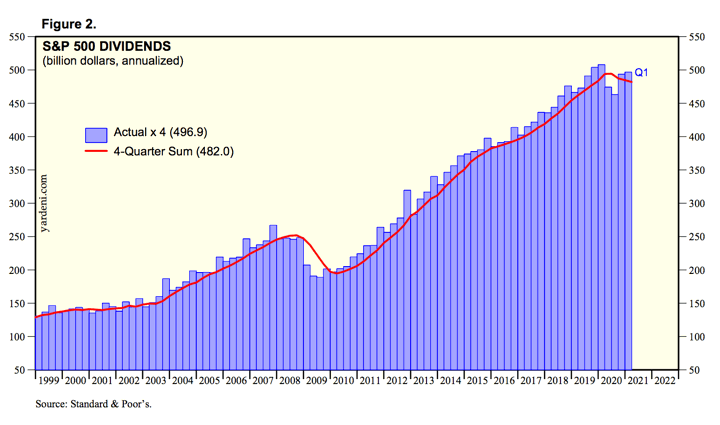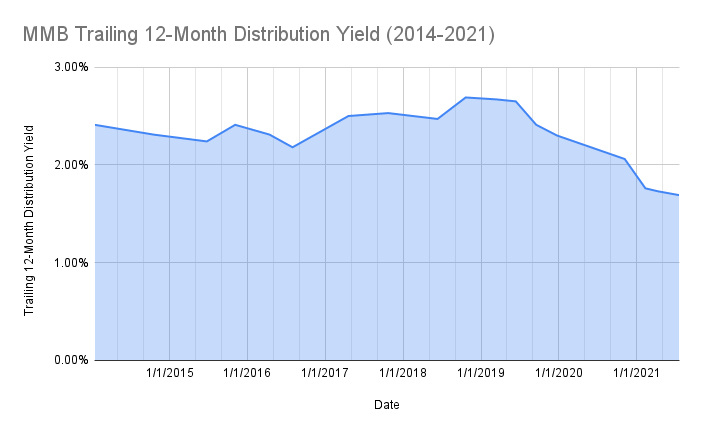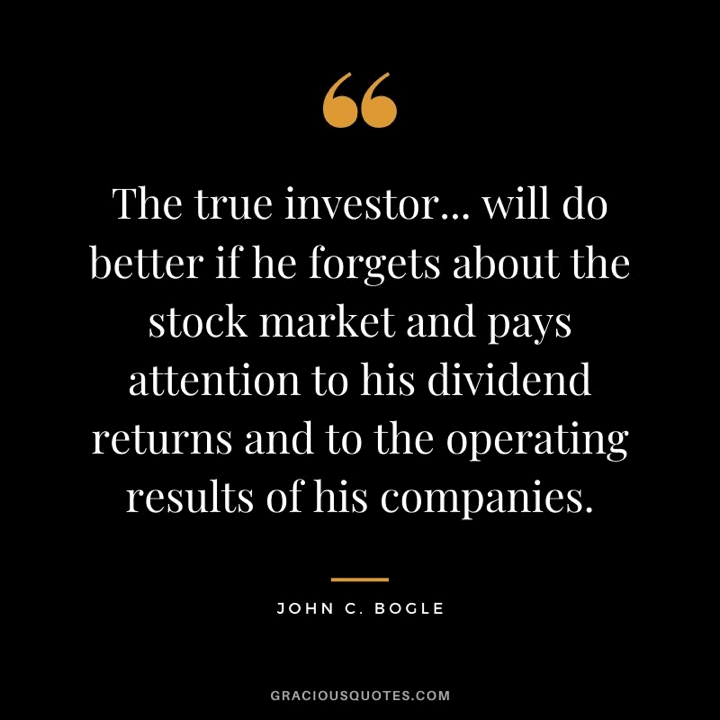Dividend and Curiosity Revenue — My Cash Weblog

Whereas my July 2021 portfolio asset allocation is designed for whole return, I additionally monitor the revenue produced quarterly. Inventory dividends are the portion of income that companies have determined they don’t have to reinvest into their enterprise. The dividends might undergo some short-term drops, however over the long term they’ve grown quicker than inflation. Right here is the historic progress of the S&P 500 absolute dividend, up to date as of 2021 Q2 (supply):

Which means that should you owned sufficient of the S&P 500 to supply an annual dividend revenue of about $13,000 a 12 months in 1999, then at present those self same shares could be value much more AND your annual dividend revenue would have elevated to $50,000 a 12 months, even should you spent all that dividend revenue yearly.
I monitor the “TTM” or “12-Month Yield” from Morningstar, which is the sum of the trailing 12 months of curiosity and dividend funds divided by the final month’s ending share worth (NAV) plus any capital features distributed over the identical interval. I choose this measure as a result of it’s primarily based on historic distributions and never a forecast. Beneath is a tough approximation of my portfolio (2/third shares and 1/third bonds).
| Asset Class / Fund | % of Portfolio | Trailing 12-Month Yield (Taken 7/19/21) | Yield Contribution |
| US Whole Inventory Vanguard Whole Inventory Market Fund (VTI, VTSAX) | 25% | 1.26% | 0.36% |
| US Small Worth Vanguard Small-Cap Worth ETF (VBR) | 5% | 1.60% | 0.08% |
| Worldwide Whole Inventory Vanguard Whole Worldwide Inventory Market Fund (VXUS, VTIAX) | 25% | 2.44% | 0.53% |
| Rising Markets Vanguard Rising Markets ETF (VWO) | 5% | 1.98% | 0.09% |
| US Actual Property Vanguard REIT Index Fund (VNQ, VGSLX) | 6% | 2.34% | 0.24% |
| Intermediate-Time period Excessive High quality Bonds Vanguard Intermediate-Time period Treasury ETF (VGIT) | 17% | 1.26% | 0.26% |
| Inflation-Linked Treasury Bonds Vanguard Brief-Time period Inflation-Protected Securities ETF (VTIP) | 17% | 1.35% | 0.20% |
| Totals | 100% | 1.69% |
Trailing 12-month yield historical past. Here’s a chart exhibiting how this 12-month trailing revenue price has different since I began monitoring it in 2014.

Portfolio worth actuality verify. One of many issues I like about utilizing this quantity is that when inventory costs drop, this share metric often goes up – which makes me really feel higher in a bear market. When inventory costs go up, this share metric often goes down, which retains me from getting too euphoric throughout a bull market.
Right here’s a associated quote from Jack Bogle (supply):

The true investor… will do higher if he forgets in regards to the inventory market and pays consideration to his dividend returns and to the working outcomes of his firms.
Absolute dividend revenue historical past. It was harder to trace absolutely the revenue produced as I’d should take away the impact of further investments, reinvestment of dividends and curiosity, rebalancing, and capital features distributions. To get a common thought, I regarded on the Vanguard LifeStrategy Progress Fund (VASGX) to see what sort of revenue that $1 million again in 2014 would have generated up till at present. This isn’t precisely my portfolio, however is considerably shut at a gentle 80% inventory/20% bond ratio with some worldwide inventory publicity. For instance, it’s present 12-month yield is 1.59%.
Throughout 2014, VASGX distributed about $0.61 of revenue per share, at a median worth about $29 per share. That’s a yield of about 2.1%. So $1,000,000 of VASGX in 2014 would have distributed about $21,000 of annual revenue (about 34,482 shares).
Those self same 34,482 shares could be value about $1,510,000 presently (as of seven/16/2021 at $43.79 per share). In 2018, the revenue produced was roughly $27,500 a 12 months (80 cents per share). In 2019, the revenue produced was $29,000 a 12 months (84 cents per share). In 2020, the revenue produced was $23,000 a 12 months (67 cents per share ).
Placing all of it collectively. This quarter’s trailing revenue yield of 1.69% is the bottom ever since 2014. It’s nearly precisely 1% decrease than what it was in late 2018. On the similar time, each the portfolio worth and absolutely the revenue produced is larger than in 2014. Should you retired again in 2014 and have been dwelling off your inventory/bond portfolio, you’ve been doing wonderful.
Nonetheless, this isn’t essentially excellent news going ahead. There are numerous articles debating this subject, however I traditionally assist a 3% withdrawal price as an inexpensive goal for planning functions if you wish to retire younger (earlier than age 50) and a 4% withdrawal price as an inexpensive goal if retiring at a extra conventional age (nearer to 65). Nonetheless, no one is guaranteeing these numbers and flexibility could also be required to make your portfolio reliably final a very long time.
In case you are not near retirement, there’s not a lot use worrying about these decimal factors. Your time is healthier spent specializing in incomes potential by way of higher profession strikes, enhancing in your skillset, and/or on the lookout for entrepreneurial alternatives the place you’ll be able to have an possession curiosity.
How we deal with this revenue. Our dividends and curiosity revenue will not be mechanically reinvested. I deal with this cash as a part of our “paycheck”. Then, as with a conventional paycheck, we are able to select to both spend it or make investments it once more. Even when nonetheless working, you can use this cash to chop again working hours, pursue new pursuits, begin a brand new enterprise, journey, carry out charity or volunteer work, and so forth.

